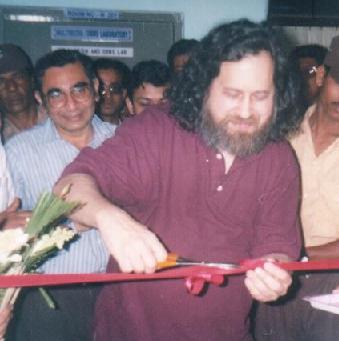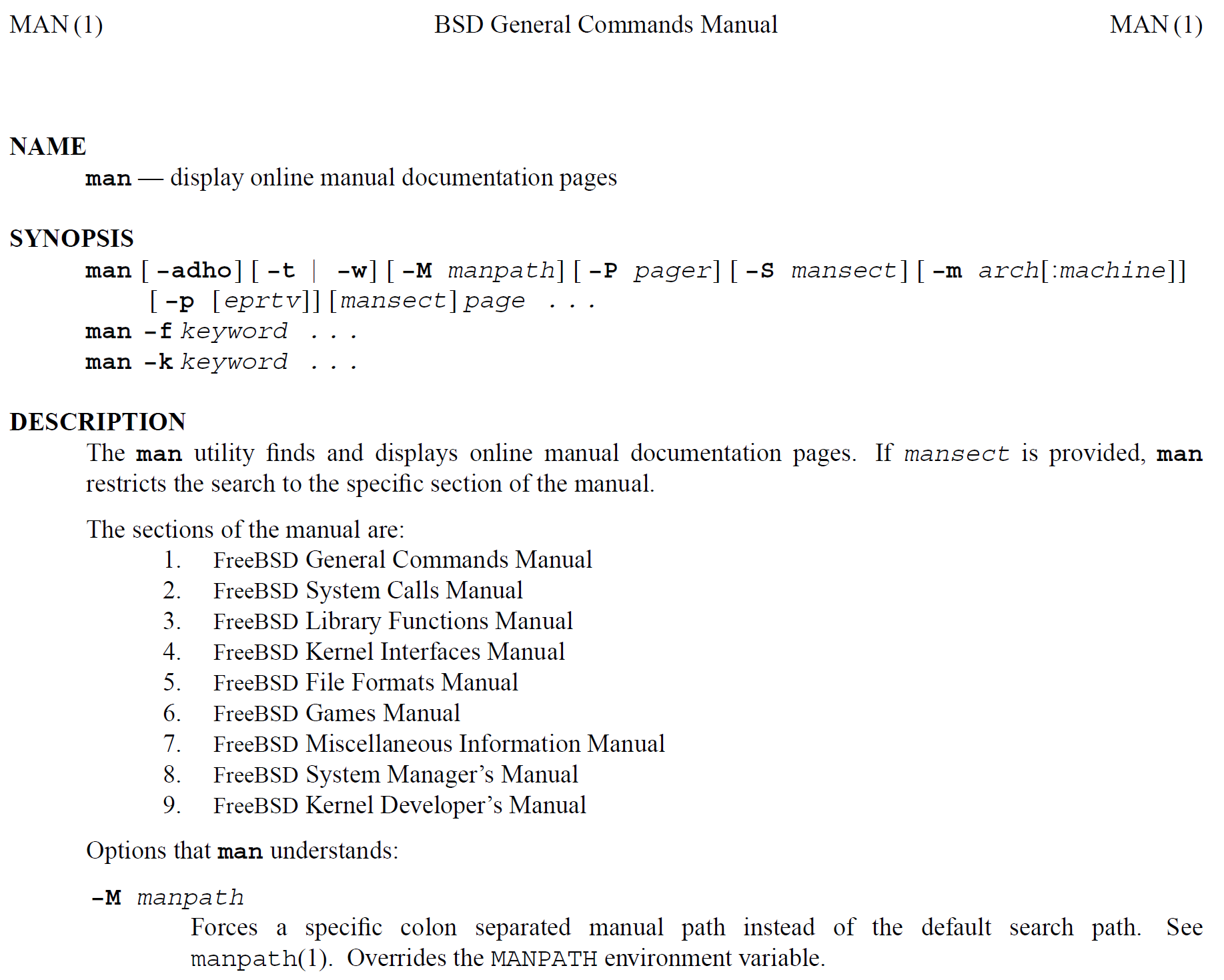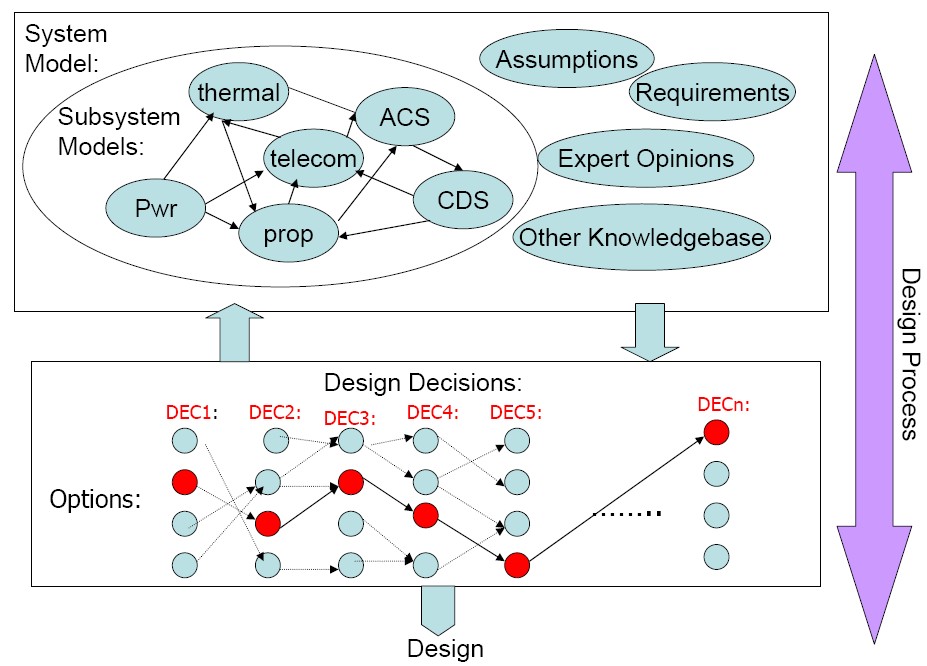|
Texinfo
Texinfo is a typesetting syntax used for generating documentation in both on-line and printed form (creating filetypes as , , , etc., and a specific hypertext format, ) with a single source file. It is implemented by a computer program released as free software of the same name, created and made available by the GNU Project from the Free Software Foundation. The main purpose of Texinfo is to provide a way to easily typeset software manuals. Similar to the LaTeX syntax, all the normal features of a book, such as chapters, sections, cross references, tables and indices are available for use in documents. Using the various output generators that are available for Texinfo, it is possible to keep several documentation types up-to-date (such as on-line documentation provided via a Web site, and printed documentation, as generated using the TeX typesetting system) using only a single source file. The official Texinfo documentation states that the first syllable of "Texinfo" is pronounced ... [...More Info...] [...Related Items...] OR: [Wikipedia] [Google] [Baidu] |
Richard Stallman
Richard Matthew Stallman ( ; born March 16, 1953), also known by his initials, rms, is an American free software movement activist and programmer. He campaigns for software to be distributed in such a manner that its users have the freedom to use, study, distribute, and modify that software. Software which ensures these freedoms is termed free software. Stallman launched the GNU Project, founded the Free Software Foundation (FSF) in October 1985, developed the GNU Compiler Collection and GNU Emacs, and wrote all versions of the GNU General Public License. Stallman launched the GNU Project in September 1983 to write a Unix-like computer operating system composed entirely of free software. With that he also launched the free software movement. He has been the GNU project's lead architect and organizer, and developed a number of pieces of widely used GNU software including among others, the GNU Compiler Collection, GNU Debugger, and GNU Emacs text editor. Stallman pioneered the ... [...More Info...] [...Related Items...] OR: [Wikipedia] [Google] [Baidu] |
Robert Chassell
Robert "Bob" Chassell was one of the founding directors of the Free Software Foundation (FSF). Life Chassell was born on 22 August 1946, in Bennington, VT. He read economics at Peterhouse, Cambridge University. In 1985, he became one of the founding directors of the FSF. While on the Board of Directors, he was also the treasurer for the FSF. At this time, he started the Texinfo documentation system for GNU together with Richard Stallman. He left the FSF to become a full-time speaker on free software topics. He was diagnosed with progressive supranuclear palsy Progressive supranuclear palsy (PSP) is a late-onset neurodegenerative disease involving the gradual deterioration and death of specific volumes of the brain, linked to 4-repeat tau pathology. The condition leads to symptoms including Balance di ... (PSP) in 2010, and died as a result on 30 June 2017. Chassell has authored several books including: * * References External links A 30 minute audio interview wit ... [...More Info...] [...Related Items...] OR: [Wikipedia] [Google] [Baidu] |
Unix Manual
A man page (short for manual page) is a form of software documentation found on Unix and Unix-like operating systems. Topics covered include programs, system libraries, system calls, and sometimes local system details. The local host administrators can create and install manual pages associated with the specific host. A manual end user may invoke a documentation page by issuing the man command followed by the name of the item for which they want the documentation. These manual pages are typically requested by end users, programmers and administrators doing real time work but can also be formatted for printing. By default, man typically uses a formatting program such as nroff with a macro package or mandoc, and also a terminal pager program such as more or less to display its output on the user's screen. Man pages are often referred to as an ''online'' form of software documentation, even though the man command does not require internet access. The environment variable MANP ... [...More Info...] [...Related Items...] OR: [Wikipedia] [Google] [Baidu] |
Info (Unix)
Info is a software utility which forms a hypertextual, multipage documentation and help viewer working on a command-line interface. Info reads ''info'' files generated by the '' texinfo'' program and presents the documentation as a tree with simple commands to traverse the tree and to follow cross references. For instance, pressing the space bar scrolls down within the current tree node or goes to the next node in the current document if already at the bottom of the current node, allowing to read the contents of an info file sequentially. Pressing the backspace key moves in the opposite direction. Furthermore: * goes to the next node in the current document. * goes to the previous node in the current document. * goes to the next node on the same level as the current node. * goes to the previous node on the same level as the current node. * ("up") goes to the parent of the current node. * goes to the last visited node. * Moving the cursor over a ''link'' (a word preceded ... [...More Info...] [...Related Items...] OR: [Wikipedia] [Google] [Baidu] |
David A
David (; , "beloved one") was a king of ancient Israel and Judah and the third king of the United Monarchy, according to the Hebrew Bible and Old Testament. The Tel Dan stele, an Aramaic-inscribed stone erected by a king of Aram-Damascus in the late 9th/early 8th centuries BCE to commemorate a victory over two enemy kings, contains the phrase (), which is translated as " House of David" by most scholars. The Mesha Stele, erected by King Mesha of Moab in the 9th century BCE, may also refer to the "House of David", although this is disputed. According to Jewish works such as the '' Seder Olam Rabbah'', '' Seder Olam Zutta'', and '' Sefer ha-Qabbalah'' (all written over a thousand years later), David ascended the throne as the king of Judah in 885 BCE. Apart from this, all that is known of David comes from biblical literature, the historicity of which has been extensively challenged,Writing and Rewriting the Story of Solomon in Ancient Israel; by Isaac Kalimi; page 3 ... [...More Info...] [...Related Items...] OR: [Wikipedia] [Google] [Baidu] |
Emacs
Emacs (), originally named EMACS (an acronym for "Editor Macros"), is a family of text editors that are characterized by their extensibility. The manual for the most widely used variant, GNU Emacs, describes it as "the extensible, customizable, self-documenting, real-time display editor". Development of the first Emacs began in the mid-1970s, and work on GNU Emacs, directly descended from the original, is ongoing; its latest version is , released . Emacs has over 10,000 built-in commands and its user interface allows the user to combine these commands into macro (computer science), macros to automate work. Implementations of Emacs typically feature a dialect (computing), dialect of the Lisp (programming language), Lisp programming language, allowing users and developers to write new commands and applications for the editor. Extensions have been written to, among other things, manage Dired, files, Secure Shell, remote access, Gnus, e-mail, Org-mode, outlines, multimedia, Magit, Git ... [...More Info...] [...Related Items...] OR: [Wikipedia] [Google] [Baidu] |
TECO (text Editor)
TECO or Teco may refer to: Organisations * Taipei Economic and Cultural Representative Office, a Taiwan representative office alternative to an embassy * TECO Maritime, an international producer and supplier of cleaning systems for ships * TECO Electric and Machinery, a Taiwanese company in electric motor, electric appliances and other businesses worldwide * TECO Energy, an American electrical power company * Technical Education Center Osceola, a secondary school in unincorporated Osceola County, Florida, US * Telecooperation Office, a German research group in the field of pervasive Computing at the Karlsruhe Institute of Technology Other uses * TECO (text editor) ("Text Editor and Corrector", originally ''Tape Editor and Corrector''), an early computer text editor * TECO Line Streetcar, a streetcar line in Tampa, Florida, US * Teco pottery, produced by American Terra Cotta Tile and Ceramic Company * Teco (footballer) (born 1982), Brazilian footballer Wender Coelho da Sil ... [...More Info...] [...Related Items...] OR: [Wikipedia] [Google] [Baidu] |
Richard M
Richard is a male given name. It originates, via Old French, from Frankish language, Old Frankish and is a Compound (linguistics), compound of the words descending from Proto-Germanic language, Proto-Germanic ''*rīk-'' 'ruler, leader, king' and ''*hardu-'' 'strong, brave, hardy', and it therefore means 'strong in rule'. Nicknames include "Richie", "Dick (nickname), Dick", "Dickon", "Dickie (name), Dickie", "Rich (given name), Rich", "Rick (given name), Rick", "Rico (name), Rico", "Ricky (given name), Ricky", and more. Richard is a common English (the name was introduced into England by the Normans), German and French male name. It's also used in many more languages, particularly Germanic, such as Norwegian, Danish, Swedish, Icelandic, and Dutch, as well as other languages including Irish, Scottish, Welsh and Finnish. Richard is cognate with variants of the name in other European languages, such as the Swedish "Rickard", the Portuguese and Spanish "Ricardo" and the Italian "Ricc ... [...More Info...] [...Related Items...] OR: [Wikipedia] [Google] [Baidu] |
Formatted Text
In computing, formatted text, styled text, or rich text, as opposed to plain text, is digital text which has styling information beyond the minimum of semantic elements: colours, styles ( boldface, italic), sizes, and special features in HTML (such as hyperlinks). Beginnings of formatted text Formatted text has its genesis in the pre-computer use of underscoring to embolden passages in typewritten manuscripts. In the first interactive systems of early computer technology, underlining was not possible, and users made up for this lack (and the lack of formatting in ASCII) by using certain symbols as substitutes. Emphasis, for example, could be achieved in ASCII in a number of ways: * Capitalization: * Surrounding with underscores: * Surrounding with asterisks: * Spacing: Surrounding by underscores was also used for book titles: Markup languages Formatting can be marked by tags distinguished from the body text by special characters, such as angle brackets in HTML. ... [...More Info...] [...Related Items...] OR: [Wikipedia] [Google] [Baidu] |
Plain Text
In computing, plain text is a loose term for data (e.g. file contents) that represent only characters of readable material but not its graphical representation nor other objects ( floating-point numbers, images, etc.). It may also include a limited number of "whitespace" characters that affect simple arrangement of text, such as spaces, line breaks, or tabulation characters. Plain text is different from formatted text, where style information is included; from structured text, where structural parts of the document such as paragraphs, sections, and the like are identified; and from binary files in which some portions must be interpreted as binary objects (encoded integers, real numbers, images, etc.). The term is sometimes used quite loosely, to mean files that contain ''only'' "readable" content (or just files with nothing that the speaker does not prefer). For example, that could exclude any indication of fonts or layout (such as markup, markdown, or even tabs); characters s ... [...More Info...] [...Related Items...] OR: [Wikipedia] [Google] [Baidu] |
Design Rationale
A design rationale is an explicit documentation of the reasons behind decisions made when designing a system or artifact. As initially developed by W.R. Kunz and Horst Rittel, design rationale seeks to provide argumentation-based structure to the political, collaborative process of addressing wicked problems. Overview A design rationale is the explicit listing of decisions made during a design process, and the reasons why those decisions were made.Jarczyk, Alex P.; Löffler, Peter; Shipman III, Frank M. (1992), "Design Rationale for Software Engineering: A Survey", ''25th Hawaii International Conference on System Sciences'', 2, pp. 577-586 Its primary goal is to support designers by providing a means to record and communicate the argumentation and reasoning behind the design process.Horner, J.; Atwood, M.E. (2006), "Effective Design Rationale: Understanding the Barriers", in Dutoit, A.H.; McCall, R.; Mistrík, I. et al., Rationale Management in Software Engineering, Spr ... [...More Info...] [...Related Items...] OR: [Wikipedia] [Google] [Baidu] |





